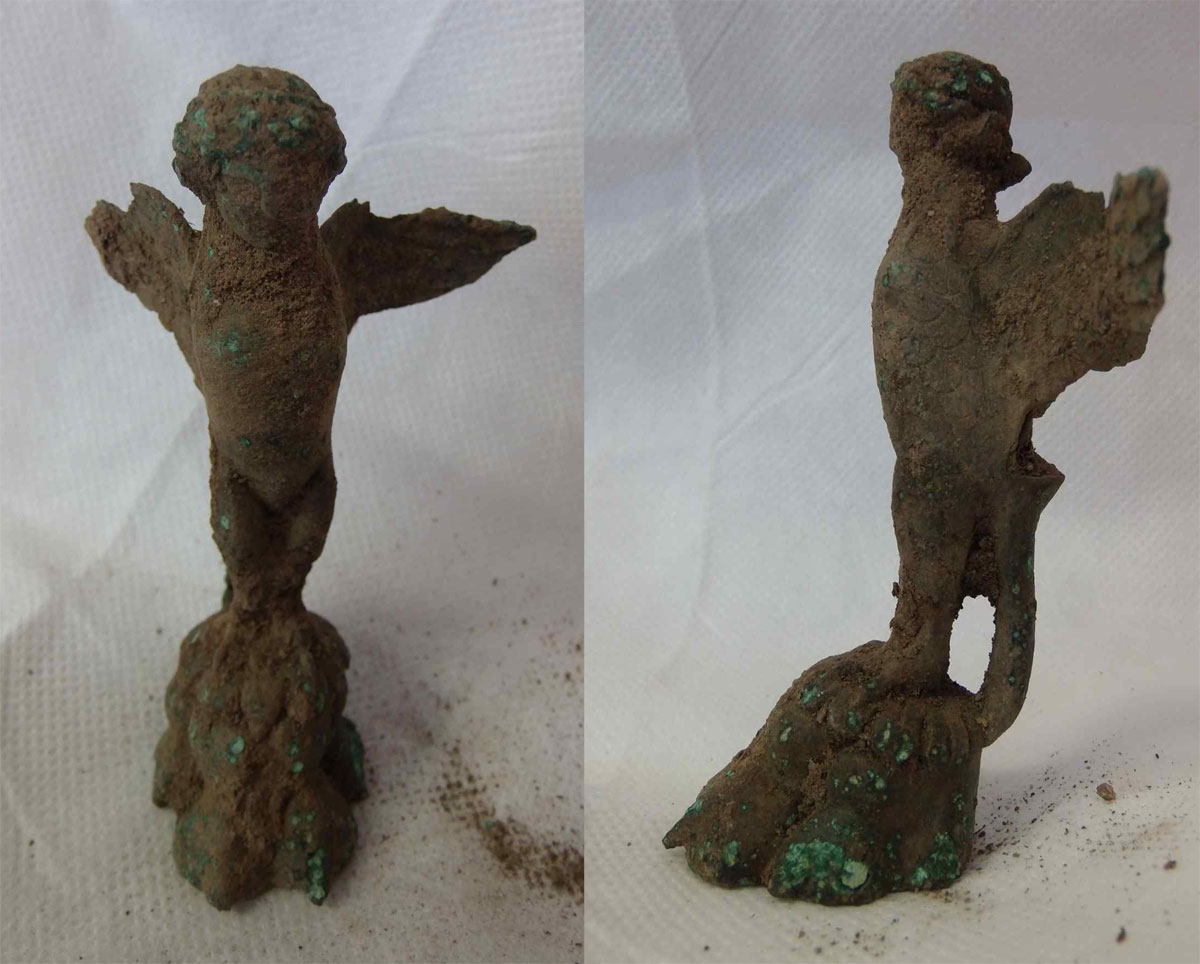In September 2014, a remarkable find was made on the site of a bronze Roman figurine, about four inches high, of an upright bird-like figure with a human head.
Trust archaeologist Ben Holloway made the discovery, in the upper part of the fill of a field-boundary ditch which also contained fragments of Roman pottery and imbrex (roof-tile) from the same context. The figurine is at a secure location but has not yet been sent away for conservation or to be studied by a specialist, so preliminary comments here are purely speculative!
Displaced, discarded, or deposited
Trust senior archaeologist Howard Brooks thinks that it is an intriguing find: “we don’t know if it was lost, displaced, discarded, or deposited as a votive in a burial or at a shrine.”
“We think that the figurine represents a harpy.”
The bronze figurine is finely detailed, in the form of an upright bird with a woman’s head and small wings which are fully open. The figure has feathers and talons, and braided hair; however, it seems to have a serpent’s tail which functions as a support. It is standing on a damaged base and also seems to have been attached at the top of the support.
A harpy was a figure in Greek and Roman mythology and harpies are often represented in ancient art and literature. There were three harpies, and they were the daughters of Thaumas (son of the sea) and Electra (daughter of Oceanus) in Greek mythology. The harpies originated as beautiful winged women, goddesses, but over time they developed into monsters. Their names were Aello, Ocypete and Celaeno. They were spirits of the wind or storm winds and were employed by the gods to punish or carry wrong-doers to the Underworld, or as messengers from the Underworld.
Trust archaeologist Emma Holloway thinks that the figurine is similar to two figures which decorate the two front corners of a small, portable, domestic Roman brazier or grate for indoor use at Pompeii. (https://www.flickr.com/photos/70125105@N06/13289850883/)
Over the years the Trust have discovered several complete Roman figurines of mythological figurs at Colchester,: the Minerva from the St Mary’s hospital site; a bronze Venus; a copper-alloy Abundantia or Fortuna from the Cups Hotel site; and a copper-alloy Mercury from the Balkerne Lane site.
A bronze figurine of Jupiter, king of the Roman gods, was found at St Mary’s Lodge in 1844 and, in 1945, Mr Albert Beales ploughed up a Roman bronze statuette of Mercury at Gosbecks (now on display in Colchester Castle Museum).
A specialist’s report will be published on the figurine in the final report on the site at Brightlingsea.

Source: Colchester Archaeology Trust

![harpie harpy. By Сергей Панасенко-Михалкин (Own work) [CC BY-SA 3.0], via Wikimedia Commons](http://www.bajrfed.co.uk/bajrpress/wp-content/uploads/2015/04/harpie-696x491.jpg)
